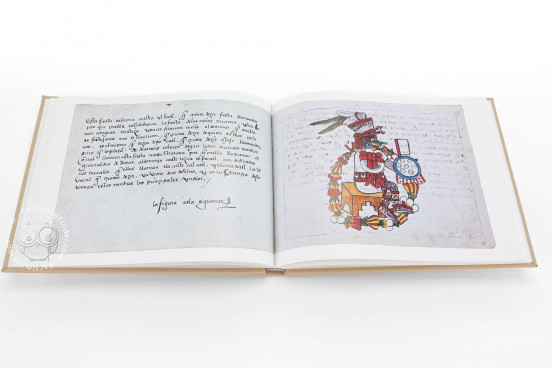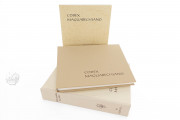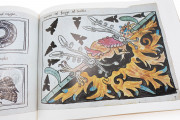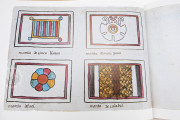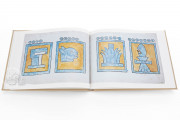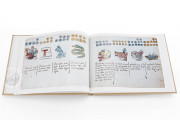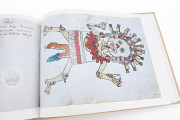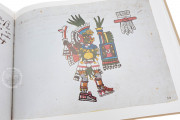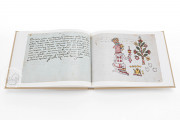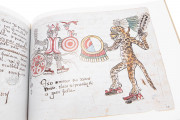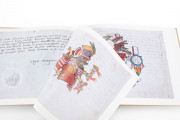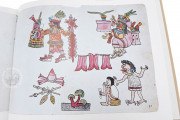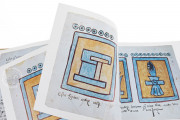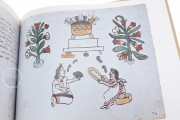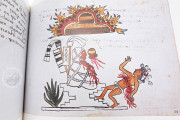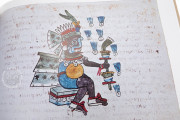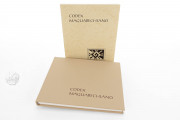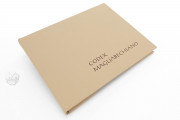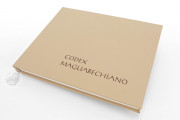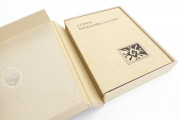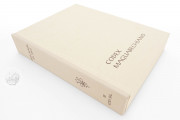The Codex Magliabechiano is an illustrated cultural encyclopedia of indigenous culture created in Mexico probably at some time between 1529 and 1553 for a European audience. One of its artists was especially well versed in traditional Mesoamerican painting techniques, providing a link to the preconquest visual art tradition. The manuscript boasts 107 pages of pictures interspersed with Spanish-language texts. Among the topics addressed in text and image are religious rites, deities, native dress, and cosmological beliefs.
The Codex Magliabechiano is especially valued as the most faithful surviving witness to an earlier illustrated manuscript of similar content that also informed the creation of the Codex Tudela and the Codex Ixlilxochitl, as well as other manuscript and print studies of Mesoamerican culture—known as the Magliabechiano Group.
Continuation of the Native Artistic Tradition
The artists, painting on European paper probably under the supervision of a Franciscan, copied designs of ceremonial tilmatlis (cloaks), feast day iconography, deities, and religious culture. They painted in the traditional style using flat areas of color (red, ocher, green, blue, and gray) often within firmly drawn black outlines against the reserve (blank) paper.
A Format Designed to Educate
Following its opening sections devoted to the designs of ceremonial cloaks and the days and years of the Aztec calendar (fols. 3r-28r), the paintings of the Codex Magliabechiano appear only on the leaves' rectos, each—with some exceptions towards the end of the manuscript—explicated by a description in Spanish on the facing verso (fols. 29v-92r). The manuscript is in its essence an annotated picture book.
Two Scribes
The main scribe of the codex wrote the descriptions of the depicted content in a neat and rather artificial script exhibiting some features of Gothic Hybrida. He probably also wrote the title page (in Gothic Textualis). A second scribe, probably writing later in the sixteenth century, added a few annotations to the painted pages.
Owned by Cosimo de' Medici's Librarian
The early history of the manuscript is undocumented. The book is named after Antonio Magliabechi (1633-1714) bibliomaniac and librarian to Cosimo III de' Medici, Grand-Duke of Tuscany, who owned it in the early eighteenth century. On his deathbed, Magliabechi left his ca. 30,000 volumes to form "a public library for the universal benefit of the city" of Florence. Following the unification of Italy in 1861, Magliabechi's books formed one of the foundation collections of the Biblioteca Nazionale Centrale, officially named as such in 1885.
We have 2 facsimiles of the manuscript "Codex Magliabechiano":
- Codex Magliabechiano facsimile edition published by Akademische Druck- u. Verlagsanstalt (ADEVA), 1970
- Codex Magliabechiano facsimile edition published by University of California Press, 1983

